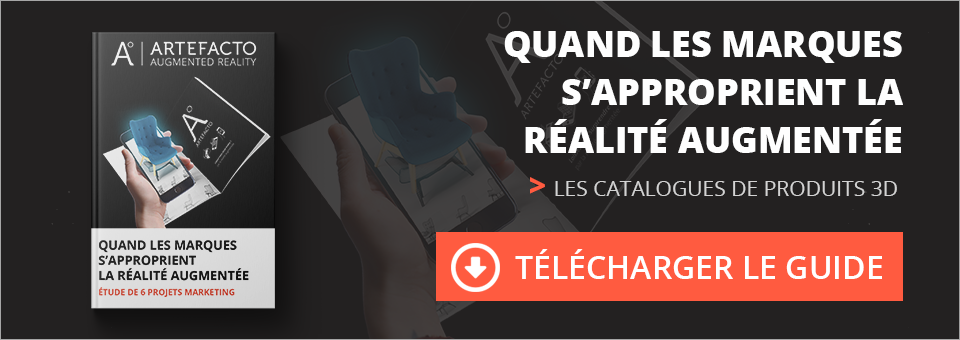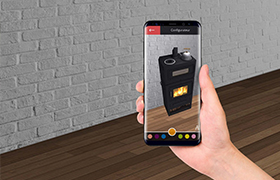Commerce, industrie, loisirs… La réalité augmentée s’immerge peu à peu dans tous les domaines d’activité.
Qui aurait cru qu’il serait possible de plonger le consommateur dans un univers virtuel et si réaliste grâce à des technologies immersives ? Le potentiel des applications de réalité virtuelle et de réalité augmentée n’a plus de limites. Visualisation de produits en 3D, modélisation ou animation en 3D…nombreuses sont les marques qui s’en emparent aujourd’hui pour faire découvrir leurs produits et dynamiser leurs ventes.
retail et industrie : l'avènement de la 3d
La 3D est une véritable révolution technologique. Le boom est tel qu’en 2020, on prévoit 120 milliards de dollars de revenus* pour la réalité augmentée et 30 milliards pour la réalité virtuelle.
Lunettes connectées, casque de réalité virtuelle, multiples applications sur les smartphones…Le grand public comme les professionnels voient leurs usages numériques bouleversés par ces technologies immersives et leurs équipements.
* Source : Digi Capital
« Le boom de la 3D est tel qu’en 2020, on prévoit 120 milliards de dollars de revenus* pour la réalité augmentée et 30 milliards pour la réalité virtuelle. »
Une chose est sûre : c’est que tous les secteurs vont bénéficier de ce boom technologique !
L’industrie, par exemple, n’est pas en reste. Les acteurs du secteur ont bien saisi l’opportunité de la réalité augmentée (RA). Des constructeurs aéronautiques comme Boeing, ou du secteur automobile comme BMW ou Ferrari l’utilisent désormais quotidiennement dans leurs process. Les observateurs voient déjà les prémices d’une immense vague de démocratisation pour tous les fabricants.
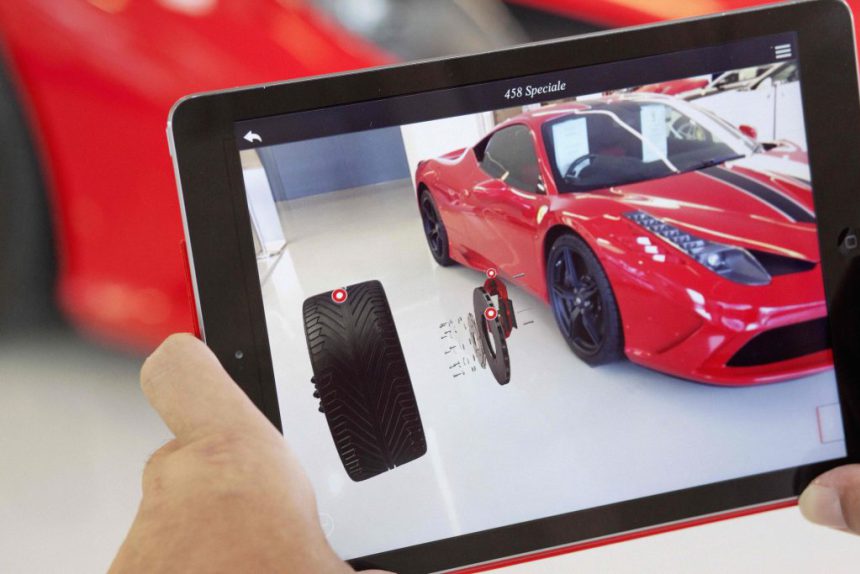
« Ferrari Augmented Reality Showroom App » par http://zspace.com.au
Un des signes de cette démocratisation ? Les catalogues 3D sont de plus en plus accessibles, tant au niveau du prix que des usages. Immersifs et complètement novateurs, ils ont l’avantage d’agrandir les possibilités de visualisation grâce à l’animation des produits en 3D !
Les répercussions marketing et commerciales sont ultra-positives : ces catalogues sont attractifs et engageants pour le consommateur. Résultat : les intentions d’achats et les recommandations montent en flèchent tandis que la marque impose une image haut de gamme.
visualisation produits 3d : quels usages ?
Les catalogues produits 3D sont de plus en plus prisés par l’e-commerce et les marques grand public. L’industrie et les fabricants ont tout intérêt à saisir ce potentiel.
Lego®, par exemple a réalisé un catalogue en réalité augmentée proposé sur une borne en magasin ou bien via l’application Catalogue Lego® 3D proposée sur Google Play !
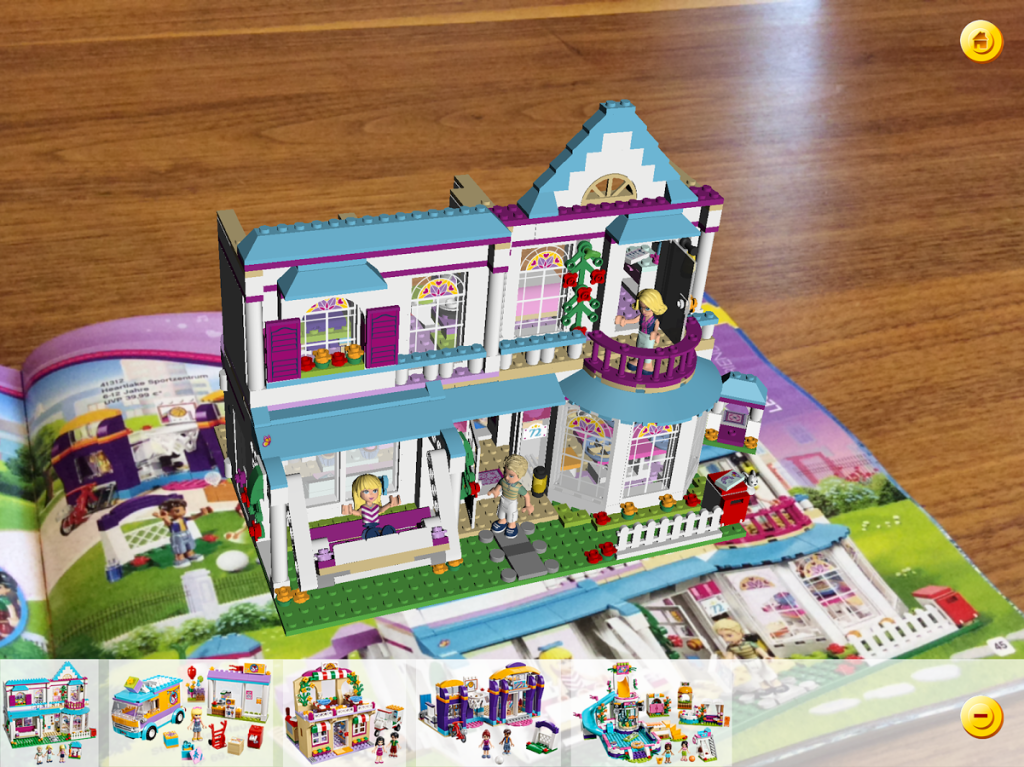
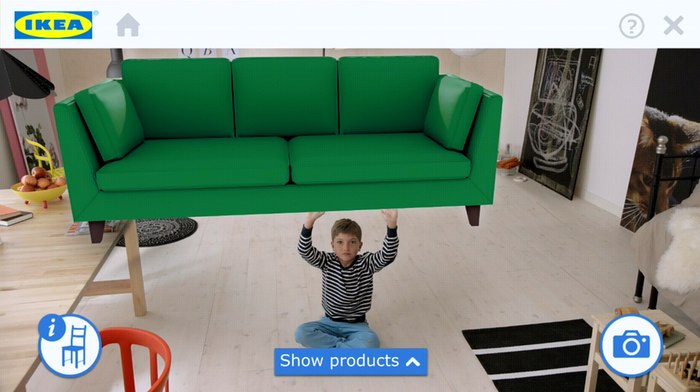
Ikea surfe aussi sur la tendance, avec son application de catalogue augmenté sortie en 2013 :
Le client peut ainsi visualiser le meuble qu’il souhaite acheter grâce à la modélisation du produit en 3D. Excellent pour la réassurance, l’aspect ludique et donc pour la transformation d’un prospect en client immédiat !
Autre exemple : Converse et son application The Sampler, grâce à laquelle les clients peuvent essayer virtuellement les modèles du catalogue avec leur smartphone.
En passant l’écran de leur caméra au-dessus de leurs pieds, le client découvre les chaussures directement à leurs pieds !
C’est on ne peut plus convaincant et immersif, notamment pour des achats en ligne.
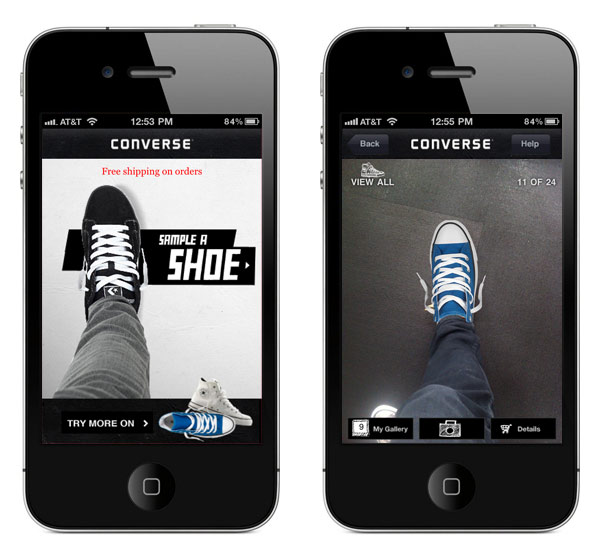
Imaginez un catalogue virtuel interactif consultable avec un simple smartphone ou même via un casque de réalité virtuelle.
L’application ayant enregistré tous les produits du catalogue, vous pouvez naviguer d’un produit à l’autre, modifier les coloris, les modèles, et les projeter à échelle réelle à son futur emplacement.
Grâce aux détails de l’animation du produit en 3D, vous pouvez tourner autour du produit ou même rentrer à l’intérieur et en observer tous les détails.
application : la 3d dans le secteur industriel
La visualisation des produits en 3D est également adapté pour les fabricants de machines industrielles. En effet, cela permet d’exposer les vues externes et internes d’un équipement, de le projeter à son emplacement final, tout en l’agrémentant d’explications et de data écrites ou audio.
Grâce à cette expérience mémorable et différenciant, la satisfaction du client augmente et la décision d’achat s’en trouve facilitée.
